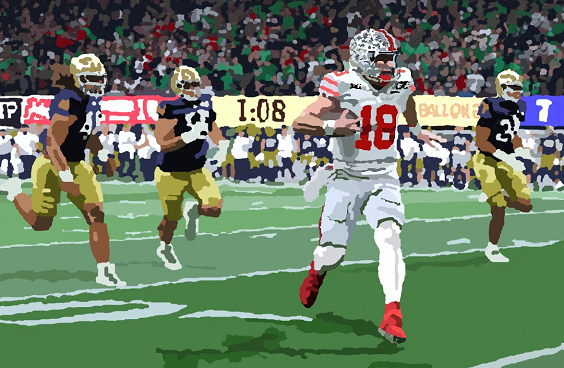2) Notre Dame 14-2
3) Oregon 13-1
4) Texas 13-3
5) Penn State 13-3
6) Georgia 11-3
7) Arizona State 11-3
8) Boise State 12-2
9) Tennessee 10-3
10) Indiana 11-2
11) Mississippi 10-3
12) Southern Methodist 11-3
13) Brigham Young 11-2
14) Clemson 10-4
15) Iowa State 11-3
16) Illinois 10-3
17) Alabama 9-4
18) Miami (Florida) 10-3
19) South Carolina 9-4
20) Syracuse 10-3
21) Army 12-2
22) Missouri 10-3
23) UNLV 11-3
24) Memphis 11-2
25) Colorado 9-4
But before I get to correcting the AP poll's errors, let me make one thing clear. This is not about what I would personally prefer to see in the rankings. I myself would be inclined to rank 10-3 Mississippi back behind 9-4 Alabama, and I would put 11-3 Arizona State and 11-2 BYU back behind 9-4 South Carolina, just as a couple of examples. But in these cases, the choices the AP poll made are logically viable, if only just barely. This is about fixing only those AP poll choices that are not logically valid or fair.
The new 12 team playoff appears to have had a negative impact on the ability of voters to properly rank teams in the top half of the AP poll. It looks like the runner-up automatically gets ranked #2, the 2 losers of the semifinal games get extra points for making it to the final 4, and even the first round losers look like they're getting a ratings boost just for making the playoffs (Clemson and SMU benefit quite a bit from this, I believe).
This leads to some irrational choices. Let's get to fixing them...

My ms-painting of Ohio State quarterback Will Howard, who led his team to a 34-23 victory over Notre Dame in the national championship game for the 2024 season. Howard threw for 2 touchdowns, a championship game record 13 straight completions, and perhaps most importantly, he ran for 8 first downs.
